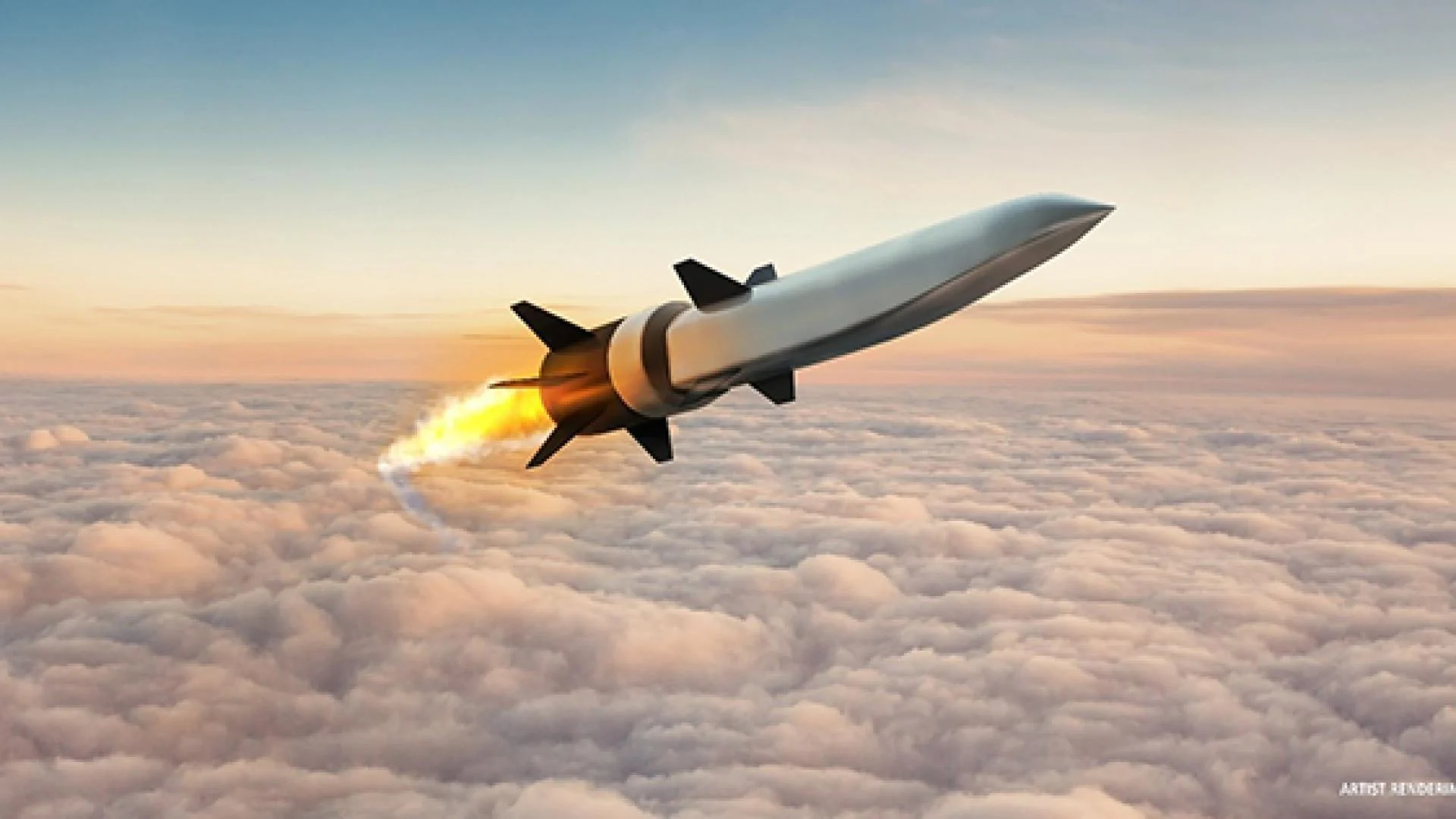I had been wanting to do an article breaking down the main hypersonic weapons that have emerged with the United States, Russia, and China for a while now, so I might as well do it now.
Before we start, I want to correct some misconceptions. There is this notion that in order to be a hypersonic weapon, it just needs to travel at or in excess of Mach 5, which is 3,800 miles per hour, but this is really not the case. The definition of hypersonic weapons nowadays has two criteria, which is that it must travel at or over Mach 5 and that it must also be maneuverable (both vertically and horizontally) within the atmosphere. So with that being said, there are hypersonic weapons and weapons that move at hypersonic speeds. The latter have been around for many decades and a perfect example would be intercontinental ballistic missiles (ICBMs), such as the United State’s LGM-30G Minuteman III, which can travel at Mach 23 (17,500 mph). The reason why most missiles are not considered “hypersonic weapons” is because missiles follow a predetermined, arched trajectory and lack maneuverability within the atmosphere. I understand that the definition is a bit muddy, but roping in ICBMs and hypersonic cruise missiles into the same boat does not do their differences any justice.
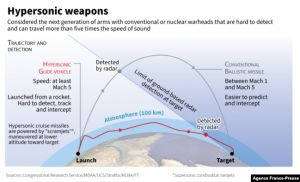
There are essentially two different kinds of hypersonic weapons: cruise missiles (HCMs) and glide vehicles (HVGs). In short, hypersonic cruise missiles travel at a constant speed and altitude for the duration of their flight utilizing scramjets (supersonic combustion ramjets). Scramjets are “air breathing,” meaning that they constantly take in surrounding air for their combustion and do not need an oxidizer like other rocket and missile systems. Glide vehicles work by being placed on top of rockets that are launched to a high altitude at great speed, where they then decouple and glide back to Earth. HVGs do not have any propulsion mechanisms that can generate thrust, meaning they gain hypersonic speed from the rockets themselves and can travel at speeds in excess of Mach 20 depending on the rocket they are attached to. HCM and HVG’s speed and maneuverability make them practically impossible to track and intercept. To date, there are no existing methods to shoot them down.
I know a lot of people are going to call bullshit on those last two sentences, but it is true. Whenever I post about hypersonic weapons, I always see the “what about lasers” comment. At present, there are no laser interceptors that can down large missiles, let alone hypersonic ones, in operation. The closest thing we have right now are the United States Navy’s AN/SEQ-3 Laser Weapon System and Israel’s Iron Beam, both of which have been proven useful in engaging drones. The Iron Beam has also been used during testing to intercept rockets and mortars. Either systems, in their current state, are not capable of taking down missiles. This is largely due to the strength of the laser needed and the amount of time it is on target to produce enough heat to cause critical damage. This is not all to say laser technology to counter hypersonic weapons isn’t in development, but right now there are none in serviceable condition to do so.
With that out of the way, I am going to get into each country’s capabilities.
United States:
The United States has been trying to develop hypersonic weapons for decades, but have never been able to field one largely due to lack of funding and development issues. To date, the United States does not have any serviceable hypersonic weapons that have been implemented in its armed forces outside of testing. Due to this, the United States is trailing behind Russia and China, who both have serviceable hypersonic weapons. Last time I said this it pissed off a bunch of people and to those people, you have to understand that under development does not mean serviceable in the field. Rest assured, there are several ongoing experimental programs underway, but in the words of the chief executive officer of Raytheon Technologies Corp., Gregory Hayes, “At least, we are a few years behind” compared to Russia and China. With that in mind though, the question of quality and reliability come into play, but I will get to that later.
According to the Congressional Research Service, “Funding for hypersonic weapons has been relatively restrained in the past; however, both the Pentagon and Congress have shown a growing interest in pursuing the development and near-term deployment of hypersonic systems. This is due, in part, to the advances in these technologies in Russia and China, both of which have a number of hypersonic weapons programs and have likely fielded operational hypersonic glide vehicles potentially armed with nuclear warheads. Most U.S. hypersonic weapons, in contrast to those in Russia and China, are not being designed for use with a nuclear warhead. As a result, U.S. hypersonic weapons will likely require greater accuracy and will be more technically challenging to develop than nuclear-armed Chinese and Russian systems.” The Government Accountability Office has reported that funding for hypersonic weapons programs increased 740 percent from 2015 to 2020 with a total of $15 billion not including production costs.
So with all that funding, what’s cooking in the stu? On April 5, the United States Defense Advanced Research Projects Agency (DARPA) announced a second successful flight of the Hypersonic Air-breathing Weapon Concept (HAWC). In a statement posted to their website, DARPA stated that “The vehicle, after release from a carrier aircraft, was boosted to its Aerojet Rocketdyne scramjet engine ignition envelope. From there, it quickly accelerated to and maintained cruise faster than Mach 5 (five times the speed of sound) for an extended period of time. The vehicle reached altitudes greater than 65,000 feet and flew for more than 300 nautical miles.” DARPA also stated that the latest HAWC test was done so using a Lockheed Martin version, which program manager Andrew Knoedler said the “flight test successfully demonstrated a second design that will allow our warfighters to competitively select the right capabilities to dominate the battlefield.” The test was done sometime in March, but was not revealed in an effort to not further escalate tensions with #Russia.
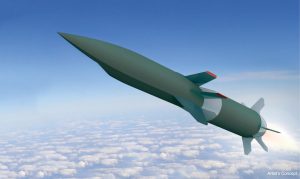
Last September, DARPA announced the successful testing of the Raytheon version of the HAWC, stating that the weapons system “could strike targets much more quickly than subsonic missiles and has significant kinetic energy even without high explosives.” President of Raytheon’s Missiles & Defense business unit, Wes Kremer, stated that “The Department of Defense has identified hypersonic weapons and counter-hypersonic capabilities as the highest technical priorities for our nation’s security,” according to Reuters.
Some other hypersonic weapons currently in development include:
- Conventional Prompt Strike (CPS)
- Long-Range Hypersonic Weapon (LRHW)
- AGM-183 Air-Launched Rapid Response Weapon (ARRW)
- Hypersonic Attack Cruise Missile (HACM)
- Tactical Boost Glide (TBG)
- Operational Fires (OpFires)
The AGM-183 program has been plagued with issues. The system is supposed to be a glide-boosted weapon, meaning that the entire weapon uses rockets to reach speeds of Mach 20 before an integrated glide vehicle releases and heads towards the target. Development began in 2018 with Lockheed receiving nearly $500 million in funding and initial testing proved to be optimistic, with President Trump touting it as the “Super-Duper Missile.”However, when it came to test flights, all three failed in 2021. Last month, the U.S. Air Force signaled that no plans to buy ARRWs in its 2023 budget after already cutting funding to the program by nearly a half. As of right now, the project isn’t dead, but it faces frequent setbacks and delays. If all goes well the ARRW is expected to have early operational status by next year.
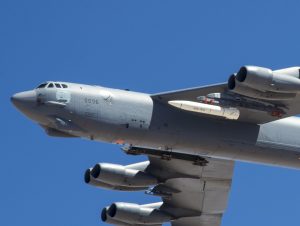
The same day DARPA announced the latest HAWC test, Australia-US-UK security pact “AUKUS” announced a new trilateral cooperation agreement on the development of hypersonic and counter-hypersonic weapons systems. @tessaron_news as an article on the website and app on the evolution of AUKUS, which I recommend everyone check out. The expansion of AUKUS into hypersonic weapons is a clear response to China’s own hypersonic weapons program, which has expanded greatly over the past several years. China, who opposes the AUKUS alliance, stated that the move will “not only increases the risk of nuclear proliferation … but also further intensifies the arms race in the Asia-Pacific.”
China:
China is one of two countries that currently possess operational hypersonic weapons with the other being Russia. At present, the country’s only operational hypersonic weapon is the DF-ZF hypersonic glide vehicle, which entered service in 2019. The DF-ZF works like any standard HGV and is outfitted on DF-17, DF-21, and DF-31 ballistic missiles. This HGV was designed specifically for anti-ship operations, which pose a threat to American aircraft carriers if a conflict were to break out.
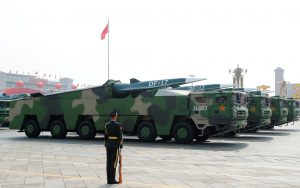
China’s most recent hypersonic test occurred last summer utilizing a fractional orbital bombardment system (FOBS) to launch HGV, a combination never seen before that has been seen as a concern by the United States. FOBS is a warhead delivery system that essentially achieves low orbit, but purposefully retrograde burns before completing one full orbit so that it bypasses international treaties banning weapons in orbit. The tactic was developed by the Soviets during the cold war as a nuclear warhead delivery system. Benefits to this are that the trajectory is very fast and very low, being able to avoid radar detection without any range limits. China denied that the launches were for hypersonic weapons and insisted it was for space exploration. One caveat to the latest test is that the HGV missed its target by nearly 20 miles, but former vice chairman of the Joint Chiefs of Staff General John Hyten said that it was “close enough” to be of concern considering it was its first ever test using FOBS.
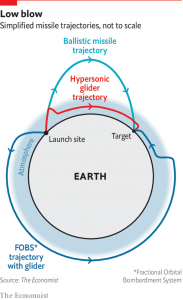
Russia:
Russia’s development of hypersonic weapons was accelerated following their withdrawal from the 1972 Anti-Ballistic Missile Treaty in 2002. Today, Russia has several hypersonic weapons in service with more in development.
One hypersonic weapon is the nuclear-capable Avangard HGV, which entered service in 2019. The system is launched via ICBMs, such as the UR-100UTTKh, R-36M2 and RS-28 Sarmat, allowing the HGV to attain speeds up to Mach 27. Russia’s Strategic Rocket Force currently employs at least six of these weapons.

Another hypersonic weapon in Russia’s arsenal is the Kh-47M2 Kinzhal, which is a nuclear-capable hypersonic aero-ballistic air-to-surface missile. I know I said there are essentially two types of hypersonic weapons, but this is the only exception. The Kinzhal, or “Dagger,” entered service in 2017 to be launched by MiG-31K supersonic interceptors and Tu-22M3M supersonic bombers. The weapon is derived from the 9K720 Iskander ballistic missile, but with added maneuverability and extended range. Iskander missiles already travel at hypersonic speed (Mach 6ish), but are not considered Hypersonic weapons due to their trajectory. The Kinzhal became the first ever hypersonic weapon to be used in combat during the 2022 Russian Invasion of Ukraine. Russia’s Ministry of Defense announced that their forces used a Kinzhal to destroy a Ukrainian weapons depot in Ivano-Frankivsk on March 18. Speaking about the strike, United States President Joe Biden stated that its is “almost impossible to stop it… There’s a reason they’re using it.”
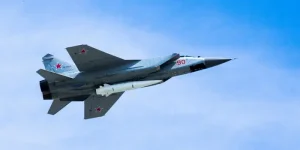
Next is the Tsirkon hypersonic cruise missile, which has seen accelerated testing and production the past two years. Russian state-owned RIA Novosti media outlet reported that over 70 test fires were carried out in 2021. The two largest test firings came about in September with over 10 being launched in a single trial and on December 24 when an unspecified number were salvo launched at both naval and ground targets. Most if not all of the tests occurred in either the White or Barents Sea.The Tsirkon, which Russia claims can reach speeds of up to Mach 9 with the use of a scramjet, can be launched from naval, ground, and air platforms. Russia plans on equipping these weapons on surface warfare vessels and submarines to hit both land and sea targets, with serial production of the weapon being announced last November. Russia plans on having the missiles in full service throughout their navy by 2025.
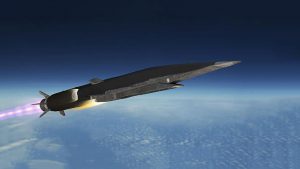
The last weapon I will touch upon is the Kh-95. Not much is known about the system, which was only recently mentioned in an August 2021 edition of Russian journal Military Thought. In the journal, Colonel-General Vladimir Zarudnitsky stated “Today supremacy in the air is a vital condition for ground and naval groupings of troops (forces) to conduct combat operations successfully. For this purpose, Russia is developing and accepting such advanced and upgraded armaments, military and special hardware for service in its Aerospace Force as the Tu-160M strategic missile-carrying bomber, the Kinzhal airborne hypersonic missile system and long-range air-launched precision weapons, in particular, the X-95 hypersonic missile.” That’s really all we know at this time.
To wrap this up, I want to make a few things clear. Does the United States have field ready hypersonic weapons? No. Does China and Russia have field ready hypersonic weapons? Yes. Is the United States lagging behind its adversaries? Technically yes, since they still do not have any hypersonic weapons in an operational capacity. Does this mean that Russia and China’s hypersonic weapons are the best in the world? Not at all. Just because you are the first to do something, does not mean you are the best at it. Being the “leader” in something can be subjective at times, since you may trailblaze initially just to be overshadowed by competitors with vastly superior capabilities. Hypersonic weapons are still in an infancy stage and while Russia and China both have them in an operational capacity, their reliability, accuracy, and consistency are not yet fully understood. As we saw with China’s latest test, it missed its target by 20 miles. Granted, all sides will see improvements as testing continues, but with only one battlefield use case there are still a lot of unknowns. But one this is known for sure, the hypersonic weapons race is still in full swing.


